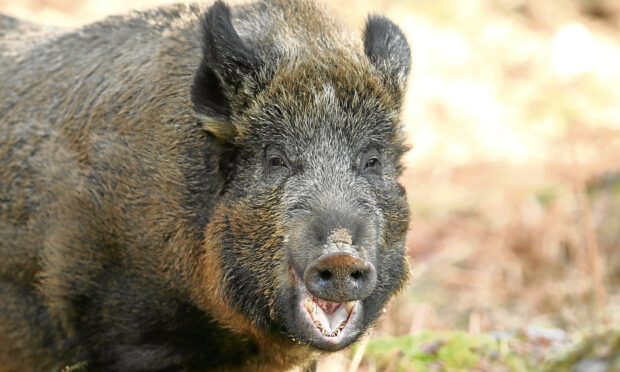While beavers might have been grabbing all the headlines as far as reintroduced species are concerned, a university researcher is keen to gather information on the extent of what he believes is a growing population of wild boar located in the Perthshire and Angus area.
With a thriving colony believed to have taken up residence in the countryside, near Alyth, a wildlife population scientist from University College London, Gavin O’Donnell, is keen to speak to farmers and locals in the area to gauge the level and type of interaction between these animals and farming operations in the area.
Mr O’Donnell said that his first step in studying the current colony was to determine how many of these animals were actually living in the wild. He said that while the herd might not yet have reached the proportions of that currently believed to be living in Dumfriesshire – which is reported to be in the region of over 200 animals, making it the second largest grouping in the UK – no one knew the exact number living wild in the Angus and Perthshire area.
“We simply don’t know how many are out there,” said Mr O’Donnell, “but estimates vary between about 20 and 40, depending on who you speak to.
“Nor do we have any real idea where they came from,” he added. “Unlike in the beaver population, so far no animals have been trapped, or shot ones recovered, to carry out the sort of DNA tests which would allow us to use genetic information to give us some idea where the animals originally came from.”
And while he admitted this lack of evidence might have had something to do with pigs being tastier than beavers, he said that samples would also be useful to identify the actual species.
“Some people refer to the population as wild boar, while others refer to them as feral pigs,” said Mr O’Donnell, “But that’s probably more of a reflection of how they feel about the animals, with the latter description indicating that they’re likely to look upon the animals as a pest rather than an asset.”
He said that while there were indications that the beavers had been deliberately released in central Scotland, with the reputation wild boar had for escaping it was more likely that the population of pigs had bred up from runaways from commercial operations.
“And while these animals can quickly adapt to different habitats, given their substantial litter size, the population numbers can quickly swell.”
Anyone with any information and who would like to help Mr O’Donnell with his study can contact him at gavin.o’donnell.17@ucl. ac.uk.
l While native wild boar were probably extinct in the UK by the 13th century, attempts were made by the aristocracy to reintroduce the species in the 17th century on hunting estates – but these were wiped out as they were largely viewed as a destructive agricultural pest.










